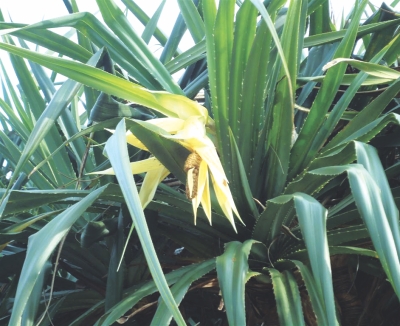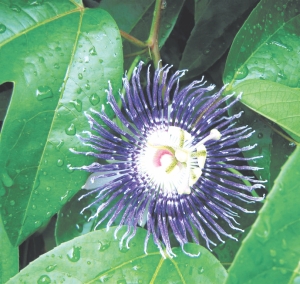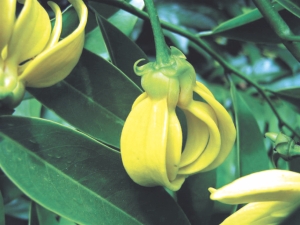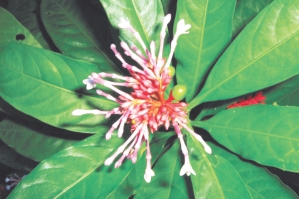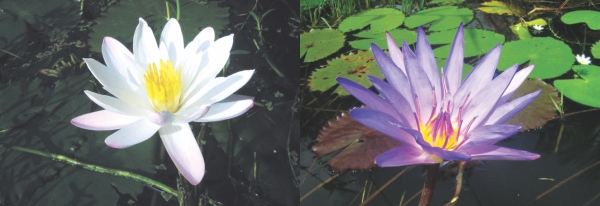| Home - Back Issues - The Team - Contact Us |
 |
| Volume 11 |Issue 26| June 29, 2012 | |
|
|
Nature On Such a Rainy Day Mokaram Hossain
The Monsoon has certain attractions that can be felt more than be seen. Bangladesh experiences rain in this season because of its geographical location, although in recent times rain patterns have changed thanks to global warming. But there are some features that remain the same. The very first shower of rain brings a huge relief to the parched land. As the rain drop falls on the dry land, a cloud of dust is created. The farmers look forward to the rain as it is a must for the seedlings that are sown at the end of summer. The seedlings grow rapidly as they get a much needed drink of rain. The fields and dykes hold muddy rain water and to welcome the monsoon, the frogs sing in chorus. Children have a great time floating paper boats on the shallow rain water.
Things around us change very quickly. The rain that goes on days together fills up the water bodies full to the brim. Another aspect of monsoon is her rich variety of flowers. The perfume of flowers waft in the wet rain water. Kodom, the signature flower of monsoon. blooms at the very outset of monsoon (on the first day of monsoon usually). Kodom (Anthocephalus chinensis), of course, may bloom in other months as well. This sweet-smelling flower of rural Bengal is at the centre of monsoon. Once Kalabati (Canna indica) and Lily (Hymenocallis littoralis) used to bloom in plenty in our woods and along thoroughfares, a rare sight these days. The rarest is Spider Lily. The village quacks use its roots to heal jaundice and the ailments of the liver. This tree is on the verge of extinction as they are being uprooted for treatment in the rural areas. The flowers have a strong fragrance and on a rainy day it's scent reaches far and wide. Surprisingly, the origin of this flower is South America. Keya (Pandanus tectorius) is another major flower of the monsoon grow in abundance in the St. Martin's Island. Keya is seen in the Baldha Garden, Ramna Park and in the Botanical Garden in Dhaka. Thanks to its unique fragrance, this flower is widely referred to in Bengali Literature. She is called the queen of the monsoon and a much mentioned flower in Tagore's poetry. Aquatic flowers have another kind of charm, adorning the water bodies where they grow in. Our national flower, water lily (Nymphaea pubescens), of course stands apart. Her beauty and fragrance in the early morning is celestial. Among other aquatic flowers of this season are Lotus (Nelumbo nucifera), Shaluk (Nymphaea nauchalli), Chandmala etc. Tagore says, “The monsoon air is stirred by the scent of Malati” (Aganosma dichotoma). And indeed Malati fills the air of the rainy days. She blooms amid incessant rain in the monsoon although in recent times it is becoming rare. Jhumkolata (Passiflora caerulea) is another beauty of the monsoon. The flower of this creeping plant resembles an ornament. This plant can be easily identified by its triangular leaves. The thick thread-like petals are arranged in square shape around the flowers. The bottom of the petal is blue; the upper part is gradually white. Another variety of this species bear Tang fruits.
Then there is the much adored Kathalichanpa (Artobotrys odoratissimus). This flower is adored by many. This sweet-scented flower often escapes our eyes as it is hidden behind the leaves. Some herbal plants also bear flowers in the monsoon. Two such flowers are Sorpogondha (Rauwolfia serpentina) and ulatcondal (Gloriosa superba). These two flowers are very attractive. A few exotic flowers also bloom in this season. Multicoloured Furus (Lagerstroemia indica) and Lankastary (Lagerstroemia indica) are among them. Their white, violet, pink and reddish pink flowers are very attractive. Portlandia and Baobab bloom in the Baldha Garden and Ramna Park respectively. Some other flowers of the monsoon are Chalta (Dilenia Indica), Nishipadma (Epiphyllum oxypetalum), Jui (Jasminum auriculatum), Sukhdorshan (Crinum amabile), Chamely (Jasminum grandiflorum), Hongsolata, Sultanchanpa (Calophyllum inophyllum).
|
||||||||||||||||||||||||
Copyright
(R) thedailystar.net 2012 |
|||||||||||||||||||||||||
